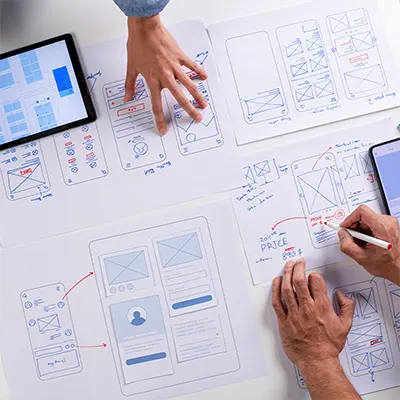Is Your Website Making the Right First Impression?

It only takes a fraction of a second for visitors to form an opinion about your website. While things like testimonials, reviews, and a high quality blog definitely contribute to the credibility of a website, a first impression is based on the things a user can perceive in those first crucial moments. Here’s what your site needs for a great first impression.
Security
If your website doesn’t offer adequate security, it can stop a user before they even see the site.
If your site still uses the older HTTP data transmission protocol rather than the newer and more secure HTTPS, anyone who tries to visit your website using the Google Chrome browser will see a red “Not Secure” warning in the URL address bar. That tells your potential site visitors that your website does not have the extra layer of encryption that protects their personal data from being stolen or misused.
In one study, 64% of users said they would leave a site "instantly" if they saw a Not Secure warning. To avoid scaring away customers, and, more importantly, to make sure that any information your users enter on your site remains secure, upgrade your website connection to HTTPS.
Speed

Your site visitors expect your website to be loaded and usable within 2 seconds, and Google found that 53% of mobile users will leave a page that takes more than 3 seconds to load. If your site takes too long to load, you’ll lose website traffic, get fewer sales, and see decreased customer satisfaction.
According to one report, a 1-second delay in load times can reduce page views by 11% and conversions by 7%. If you have an ecommerce site, 79% of consumers who experience slow load times or other performance issues on a website will never visit the site again.
To find out how to check your load times and improve your site’s performance, see our blog post How to Improve Your Website Speed.
Responsiveness
More than half of all internet traffic is from mobile devices, which means most of your site visitors will be looking at your site on a device smaller than a computer monitor.
If your website is not responsive—which is a design style that enables a website to adjust its styling based on the screen size of the device being used—your visitors will likely have a frustrating experience using your site and will be more likely to leave.
Not only does the lack of responsive design drive visitors away, it can also lower your position in search results, since responsive design is Google’s recommended web design type.
Design
When it comes to websites, appearances matter. It takes only 50 milliseconds for your site visitors to take in the overall design and aesthetics of your website, including layout, color, balance, legibility, and overall visual appeal. If they don’t like what they see, they are less likely to stay on your site—according to a study by Adobe, 38% of internet users will stop engaging with a website if the content or layout is unattractive.
If your site looks cluttered, out-of-date, or unsophisticated, it’s not a good representation of your brand and it might be time to consider a website redesign.
Content
Quality website content is one of the most important ways to establish the credibility of your website, but when it comes to first impressions, the content that matters is the content on your home page.
Make sure the messaging on your home page is clear and well-written and gives your site visitors the information they need—who you are and what you can do for them. Be sure to double- and triple-check for any typos, grammatical errors, or awkward wording.
Content also includes images, so choose photographs or other visual elements that are high-quality, engaging, and evoke an emotional response that reinforces your brand.


